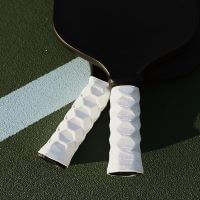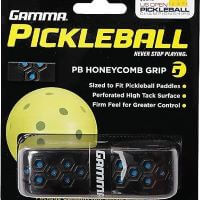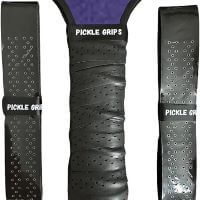Doesn’t it seem simple? Holding a pickleball paddle can’t be that difficult, can it? The issue isn’t how hard it is to hold the paddle. Here’s how you can improve your pickleball game by holding a pickleball paddle correctly. Pickleball fundamentals are essential to learning right from the start since bad habits are much harder to change later.
Here’s to a great start! The purpose of this article is to teach you how to hold a pickleball paddle correctly, along with where to hold it.
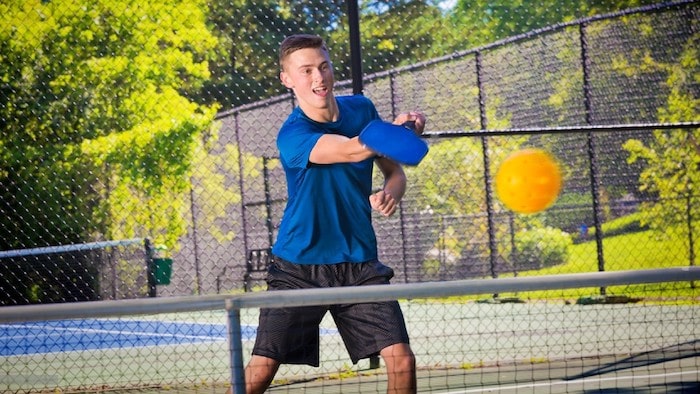
You Might Also Like:
How to Hold a Pickleball Paddle?
When you’re playing pickleball, you’re probably going to use one of three grips. There are three types of grips: the continental grip, the eastern grip, and the western grip. Each grip has its advantages. If you want to select the best pickleball paddle grip for you, you should consider your mechanics and game style, as well as what feels most comfortable in your hand.
Let’s break down the three (3) most common pickleball grips if you’re considering getting into pickleball or simply exploring new ways to hold your paddle.
The Eastern Grip
Firstly, let’s talk about the Eastern grip, which is the most common grip in pickleball and the one we recommend most to a new player. In tennis or racquetball, you must change your grip from forehand to backhand when you switch to the Eastern grip.
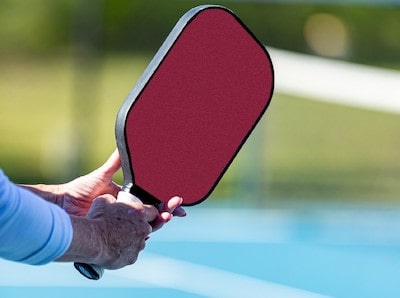
To find the Eastern Grip, follow these steps:
- Put your playing hand on the paddle’s face
- Your hand should be able to grip the handle once you drag it down
- Ideally, your grip should resemble how you would shake someone’s hand
The Western Grip
Although the Western pickleball grip is less common, it is still seen around the courts. When you flip a pancake, the Western pickleball grip is similar to how you hold a frying pan. Westerns favour the forehand grip and offer a lot of spins, but do create an awkward angle when attempting a backhand. Due to this, you may see players with Western grips hitting their backhands and forehands simultaneously.
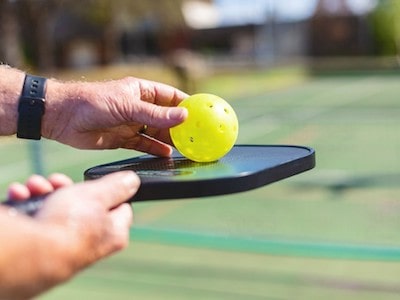
Finding the Western Grip is as follows:
- You need to find the Eastern Grip.
- Grab the handle of the paddle with your playing hand and drag it down the paddle’s face.
- In a general sense, rotate the paddle from 60 to 90 degrees in the direction of the ground. (The left side of the paddle face is for righties, and the right side is for lefties.)
- As if you were holding a frying pan, your grip should sit in your hand.
The Continental Grip
Because of the angle of the paddle in your hand, the Eastern plays more into a player’s backhand than their forehand. It’s fairly common for players to hold a backhand grip while at the kitchen line, as they can block volleys back to their opponents. While it makes hitting a forehand difficult without adjusting your grip, it doesn’t make it impossible.
Here’s how to find the Continental Grip:
- Identify your Eastern grip. Drag your playing hand down the paddle’s face and grip the handle while you drag your hand down the paddle’s face.
- To counter the Western grip, rotate your paddle face 60-90 degrees to the left or right. To rotate the paddle, turn it roughly 60-90 degrees in the ground. (A right-handed paddle has the right side, and a left-handed paddle has the left side.)
Where to Hold the Paddle?
The players around you have probably reminded you to get into your ready position.
This is especially true for new players. As you probably know, you shouldn’t stand there with your arms and paddle at your side while waiting for your opponent’s serve to come flying over the net into your unprepared side of the court.
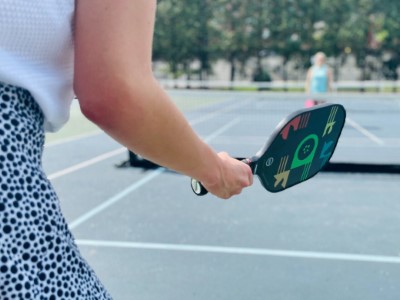
Decide what works best for you when it comes to ready positions. There is a lot of advice available from various pros, so it is definitely worth trying different ready positions and then deciding which one is most effective. There are two commonly discussed ready positions: 12 o’clock and 9 o’clock.
It’s just not a position I’ve used regularly for me since I’ve never been comfortable in 12 o’clock. Neither the 9 o’clock ready position nor the 12 o’clock ready position were comfortable. The 10 o’clock position has become instinctual for me. Both forehand and backhand ball returns seem natural to me, and I’ve had good success with them.
In addition, it’s common for players to rest their opposite hand on the paddle edge, which means you have one hand holding the paddle in your ready position while the other hand gently rests on the paddle’s edge.
A common reason for this is that some players find that it keeps them more connected to their paddles and balances them better. The 10 o’clock ready position and holding my paddle edge are my favorite positions.
FAQs
You will certainly feel more comfortable holding the paddle with your fingers around the grip. Those with table tennis backgrounds may keep one or two fingers against the paddle. In the end, it’s up to you. Some people even keep their thumbs on the paddle. Whatever helps your game, do what feels comfortable to you. Neurology and fingers are fascinating topics! You may be able to react to signals from your brain faster if your finger is on the paddle.
The very flexible, continental grip is still my go-to grip for drop shots into the kitchen, resets and slices.
Both men and women are beginning to hit two-handed backhands because they can generate more power with both hands. I recommend placing the large knuckle of your index finger on bevel #2 of your paddle when playing the two-handed backhand. Use the Eastern Forehand grip with bevel #3 for your top (or overlapping) hand (non-dominant hand). With this grip, you are able to hit topspin and/or drives with the greatest amount of flexibility.
Pickleball also benefits from a loose or relaxed grip over a tight grip. Because of the nature and style of the game, a loose grip can generate more power in your game and allow you to control your shots. A tight grip puts more pressure on your wrist, and you want to avoid it. Tennis or squash players tend to hold the paddle tight, especially if they have a tennis or squash background. With time, you will see how much this looser grip improves your game.
Wrap Up
Each of the grips mentioned has slight variations. Pickleball grips are not one-size-fits-all. If you’re just getting started playing, I highly recommend getting comfortable with the continental grip. You can start your journey with this grip.
During practice, you can even attach the grip trainer to your paddle. A comfortable grip that allows for good control of the paddle is the most important consideration when experimenting with the best grip. Have fun on the courts!

I am a professional physiotherapist and the author of the BallSportsPro. I worked with athletes of all levels, from amateur to professional, and i helped them overcome injuries and improve their performance. I am a certified Pickleball instructor and has been playing the sport for over 10 years.

